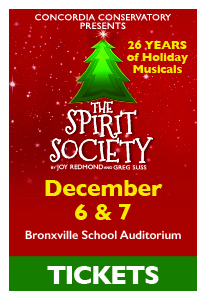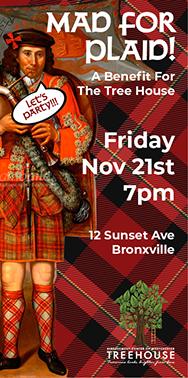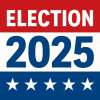From the Mayor: Message from National Day of Prayer--Connect with Each Other

By Mary C. Marvin, Mayor, Village of Bronxville
May 8, 2019: Last Thursday, on the National Day of Prayer, I attended a breakfast organized by Pastor Waterstone of the Reformed Church and attended by every Protestant church in the area as well as Rabbi Barzelai from Sinai Free Synagogue.
It was one of the most inspiring events I have attended in recent memory. Rev. Michael Bird of Christ Church gave the keynote and spoke so eloquently of the need to heal national division and connect with each other in the “pursuit of happiness.” I found his message personally transformative. He cited a recent lecture he attended that referenced the same subject in “The Origins and Consequences of Affective Polarization on the United States,” written by a consortium of Ivy League and Stanford University professors and published by the Dartmouth Press.
After reading the treatise, I was both saddened and heartened by the findings.
We are increasingly told we live in a divided nation. Sadly, this was reinforced by the data collected in this study.
Some of the most salient findings include:
-
Currently, ordinary Americans increasingly dislike and distrust those from the other political party, finding members hypocritical and closed-minded.
-
A political party has been an increasingly powerful identity acquired at an earlier age and data show rarely changed over life, notwithstanding significant shifts in personal circumstances.
-
Americans have become increasingly averse to the prospect of their children marrying someone from the other party. As reference, in 1960, 4 to 5% of parents polled cared about this association vs 33% for Democrats and 50% for Republican parents in 2010. These numbers are far beyond anything exhibited in England.
As a result, families are now politically more homogenous, with 80% of couples and 75% of their children polled sharing the same political affiliation.
Even in dating, people believe those who share their political persuasions are perceived as more attractive. As an example of the increased importance of political affiliation, eharmony documented that prior to the 2016 election, dating profiles typically did not report political affiliations – only 24.6% of women and 16.5% of males considered it a pertinent factor. After the 2016 election, the numbers increased to 68% of women and 47% of men.
The preference for political congruity even extends to platonic friendships. According to a Pew Research poll, currently, 64% of Democrats and 55% of Republicans say “just a few” or “no” close friends are from the other political party.
Consumer behavior has also been documented as to its relationship to political affiliation.
When party control of Congress switches, consumer behavior changes along party lines in anticipation of changes in the economy. After the Democrats took Congress in 2006, “strong” Democrats showed a 12.8% increase in holiday spending and a 30.5% increase in vacation spending relative to “strong” Republicans.
The spillover is quite extensive. It has been documented that mutual fund managers are more likely to invest in companies managed by co-partisans.
Unlike feelings about race, gender, and other social divides, which are subject to social norms and reprobation, there are no corresponding pressures to temper political disapproval.
Not surprisingly, the proliferation of one-viewpoint news outlets is blamed for a share of the increasingly polarized environment as exposure to partisan news stories makes those with extreme attitudes more extreme per the research. And sadly, negative campaign ads have a very strong effect on affect polarization.
So how do we fix all of the above?
Actually, it has been documented that most Americans are much more centrist than the press portrays. The average member of both political parties is actually a middle-aged white non-Evangelical Christian.
The current stereotypes of party memberships are simply wrong. As example, 11% of those registered as Democrat belong to a labor union. When queried, Americans of both parties thought that 39% of Democrats were union members. Likewise, only 2.2% of registered Republicans earn more than $250,000 per year, while the average citizen thought 38% of all registered Republicans earned at least that much.
Not surprisingly, misconceptions about party composition increase partisan animus. In essence, individuals dislike the other party in part because they inaccurately perceive it to be quite different from themselves. When the stereotypes are corrected and people realize the other party is more similar to them, the animus lessened.
The answer appears to be to heighten our commonality and share what unites us – most important, that we are all Americans first and jointly care about the future of our country.
Editor's note: As a public service, MyhometownBronxville publishes articles from local institutions, officeholders, and individuals. MyhometownBronxville does not fact-check statements therein, and any opinions expressed therein do not necessarily reflect the thinking of its staff.
Government & History Directory
Bronxville is a quaint village (one square mile) located just 16 miles north of midtown Manhattan (roughly 30 minutes on the train) and has a population of approximately 6,500. It is known as a premier community with an excellent public school (K-12) and easy access to Manhattan. Bronxville offers many amenities including an attractive business district, a hospital (Lawrence Hospital), public paddle and tennis courts, fine dining at local restaurants, two private country clubs and a community library.
While the earliest settlers of Bronxville date back to the first half of the 18th century, the history of the modern suburb of Bronxville began in 1890 when William Van Duzer Lawrence purchased a farm and commissioned the architect, William A. Bates, to design a planned community of houses for well-known artists and professionals that became a thriving art colony. This community, now called Lawrence Park, is listed on the National register of Historic Places and many of the homes still have artists’ studios. A neighborhood association within Lawrence Park called “The Hilltop Association” keeps this heritage alive with art shows and other events for neighbors.
Bronxville offers many charming neighborhoods as well as a variety of living options for residents including single family homes, town houses, cooperatives and condominiums. One of the chief benefits of living in “the village” is that your children can attend the Bronxville School.
The Bronxville postal zone (10708, known as “Bronxville PO”) includes the village of Bronxville as well as the Chester Heights section of Eastchester, parts of Tuckahoe and the Lawrence Park West, Cedar Knolls, Armour Villa and Longvale sections of Yonkers. Many of these areas have their own distinct character. For instance, the Armour Villa section has many historic homes and even has its own newsletter called “The Villa Voice” which reports on neighborhood news.
Link to Village of Bronxville One Square Mile Monthly Newsletter
Village of Bronxville Administrative Offices
337-6500
Open 9:00am - 4pm excluding holidays and weekends
Bronxville Police Department
337-0500
Open 24 hours
Bronxville Parking Violations
337-2024
Open 9:00am - 4pm excluding holidays and weekends
Bronxville Fire Deparment
793-6400

















